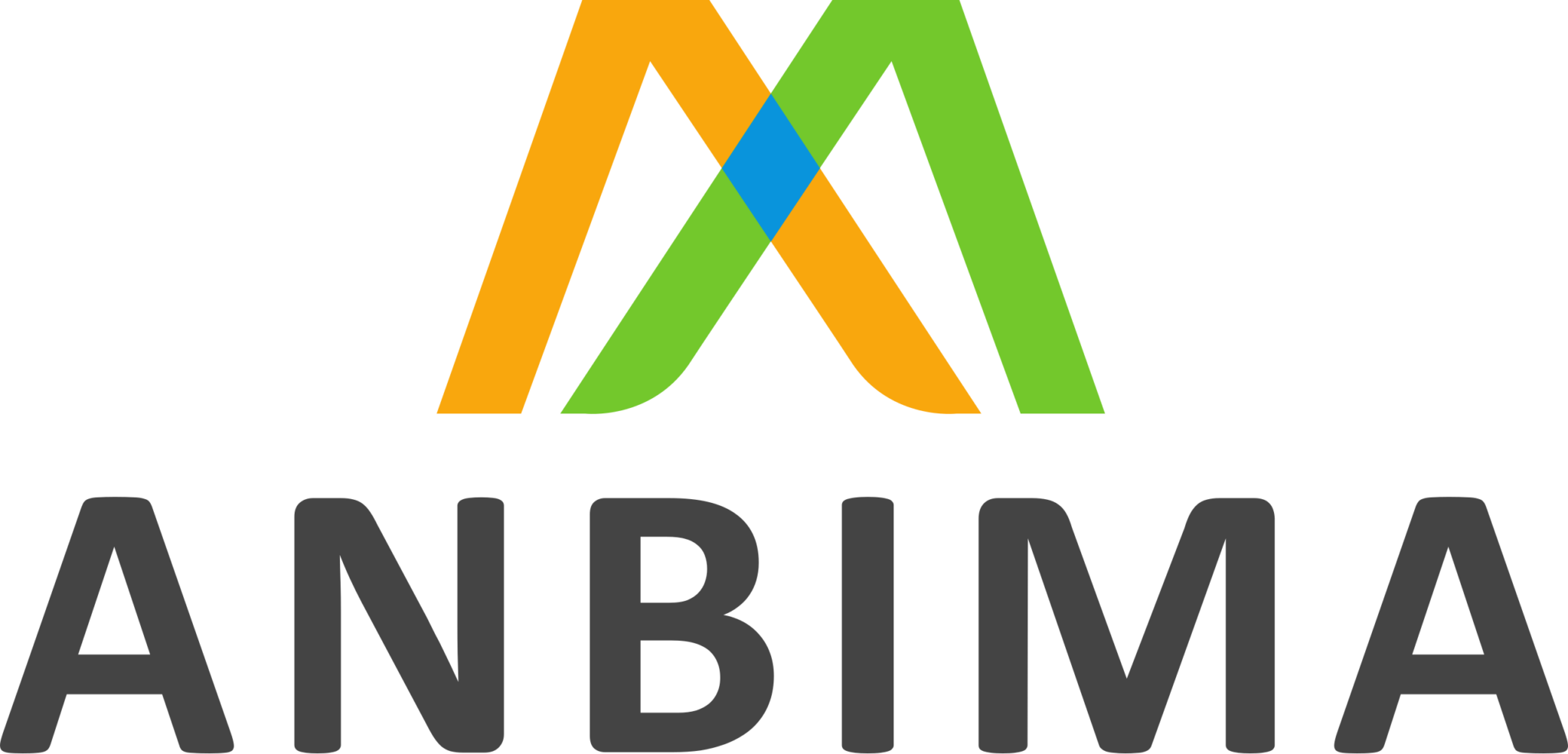In these articles, we highlight the advantages for investors when investing in each type of FIDC share class and provide an investment simulation, highlighting the monthly and annual returns of each share class.
Types of FIDC Share Classes
In FIDC investments, there are various share classes, each with its own level of risk: Senior, Mezzanine, and Junior classes. These classes may also include subclasses. Imagine a pyramid with the Senior share at the top and the Junior share at the base, each with its advantages and disadvantages in terms of risk and return.
Senior: The Senior share is the one with priority in receiving payments from the FIDC. So, even if the fund shows a negative total return in a given month and still has equity in the subordinated shares, the investors in this class will still be compensated.
However, in return, it has the lowest compensation among the share classes, typically earning a return linked to an index, usually the CDI, with an additional bonus (e.g., CDI + 4% per year). Even so, it is still higher than the average return on fixed-income investments in Brazil.
Mezzanine: The Mezzanine class is considered a hybrid, with payment priority above the Junior share. However, if the Junior shares are unable to absorb all potential losses from defaults, the Mezzanine class will have to bear the losses, protecting the Senior share investors. Its compensation method follows the same pattern as the Senior share, being an index plus an extra return.
Junior: The Junior share is the last to receive returns, with no minimum or maximum limit on its compensation. All the remaining results after paying the above shares and other fund expenses belong to the Junior class. It is also the first to bear all the credit risk of the fund, with losses passed on to other classes only after the Junior class resources are depleted.
Financial Analysis of a FIDC
In this analysis, we will examine the monthly returns of the shares in a Receivables Investment Fund (FIDC) with the following parameters:
- Total capital of R$ 10 million, with a receivables anticipation rate of 2.5% per month.
- Senior Shares: R$ 3 million, monthly return of 1.25%.
- Mezzanine Shares: R$ 3 million, monthly return of 1.5%.
- Junior Shares: R$ 4 million, responsible for all fund expenses, considering average monthly expenses of R$ 60,000.
- The analysis assumes the FIDC will allocate 100% of the capital and will have no PDD (Provision for Doubtful Debts).
To calculate the monthly gains of each share class, we can use the compound interest formula:
Montante = Principal × (1 + Taxa) Tempo
Where:
- Montante is the total value after the specified time,
- Principal is the initial amount,
- Taxa is the interest rate per period, and
- Tempo is the number of periods.
Calculation for Senior Shares
For the Senior share:
- Principal: R$ 3 million
- Interest rate: 1.25% per month
- Time: 1 month
Montante Senior = 3.000.000 × (1 + 0,0125)1
Let’s first calculate the monthly gains:
For the Senior share:
Montante Senior = 3.000.000 × (1 ÷ 0,0125)1
Montante Senior = 3.000.000 × 1,0125
Montante Senior = 3.037.500To calculate the annual gains, we raise the time to 12 months:
For Senior shares:
Montante Senior = 3.000.000 × (1 ÷ 0,0125)12
Montante Senior ≈ 3.000.000 × 1,161208
Montante Senior ≈ 3.483.624
Senior Shares Result
The Senior shares demonstrated solid performance over the analyzed period, both in terms of monthly and annual gains.
The Senior share, with a predetermined return of 1.25% per month on its capital, reached an estimated amount of approximately R$ 3,037,500 monthly, with a first-month yield of R$ 37,500.00 and accumulated an annual amount of R$ 3,483,624. This consistent return reflects its privileged position in the capital structure of the Receivables Investment Fund (FIDC), providing security and predictability to investors.
Which Investor Profile is the Senior Share Ideal For?
The Senior share is ideal for investors looking to diversify their investment portfolio, achieve consistent and above-average returns with low volatility, and enjoy an additional layer of security since subordinated shares offer protection against the risk of a potential default.
Calculation for Mezzanine Shares
For the Mezzanine share:
- Principal: R$ 3 million
- Interest rate: 1.5% per month
- Time: 1 month
Montante Mezzanino = 3.000.000 × (1 + 0,015)1
Let’s first calculate the monthly gains:
For the Mezzanine share:
Montante Mezzanino = 3.000.000 × (1 ÷ 0,015)1
Montante Mezzanino = 3.000.000 × 1,015
Montante Mezzanino ≈ 3.045.000To calculate the annual gains, we raise the time to 12 months:
For Mezzanine shares:
Montante Mezzanino = 3.000.000 × (1 ÷ 0,015)12
Montante Mezzanino ≈ 3.000.000 × 1,195618
Montante Mezzanino ≈ 3.586.854
Mezzanine Shares Result
The Mezzanine share, with a slightly higher return rate of 1.5% per month, showed robust performance, reaching an estimated monthly amount of around R$ 3,045,000, with a first-month return of R$ 45,000.00 and an annual amount of approximately R$ 3,586,854. This portion of the capital, although riskier than the Senior share, offers investors additional compensation for the higher potential return.
In summary, both Senior and Mezzanine shares presented themselves as attractive investment options, with consistent returns aligned with investors’ expectations. These results reinforce the importance of a thorough analysis of the capital structure and return rates when considering investments in funds like the FIDC.
Which Investor Profile is the Mezzanine Share Ideal For?
The Mezzanine share is ideal for investors seeking high returns with security mechanisms and low volatility since as long as there is capital in the Junior share, the Mezzanine class will not be affected. This makes it suitable for investors who have an appetite for a balanced risk-return ratio.
Calculation for Junior Shares
Considering that in a fund of R$ 10 million with an interest rate of 2.5% per month, the monthly gain from receivables anticipation is R$ 250,000.00, let’s assume this would be the gross return of the Junior subordinated share and subtract other expenses from this amount. Junior share R$ 4,000,000.00.
Given that:
- Gross monthly return of the Junior share = R$ 250,000.00
- Fund’s monthly costs = R$ 60,000.00
- Monthly discounts:
- Senior share: R$ 37,500.00
- Mezzanine share: R$ 45,000.00
Let’s calculate the net monthly return of the Junior share:
Net monthly return of the Junior share = Gross monthly return of the Junior share – Senior share discount – Mezzanine share discount – Fund’s monthly costs
Net monthly return of the Junior share = R$ 250,000.00 – R$ 37,500.00 – R$ 45,000.00 – R$ 60,000.00
Net monthly return of the Junior share = R$ 250,000.00 – R$ 142,500.00
Net monthly return of the Junior share = R$ 107,500.00
Therefore, the net monthly return of the Junior share is R$ 107,500.00.
Junior Shares Result
We can conclude that the net monthly return of R$ 107,500.00 and a yield of 2.6875% per month, with an annual return of 37.471% (R$ 1,498,838.45), makes this investment viable. All this is possible thanks to the leverage that the FIDC has in raising funds from market investors, as all excess returns from the Senior and Mezzanine shares are allocated to the Junior shares, regardless of the exceeded volume.
Allocating resources in Junior shares of the FIDC offers the possibility of substantial returns, bearing in mind that the results did not include PDD, representing the best-case scenario, and that the returns described above are a demonstration. Achieving these results depends on meeting the simulation data and the FIDC operating with 100% of its resources every month in receivables anticipation purchases.
Which Investor Profile is the Junior Share Ideal For?
The Junior share is intended for investors seeking returns well above the fixed-income market average but with greater risks than the other FIDC share classes, as any losses are deducted directly from this class before being passed on to the others. Even if the fund does not profit or incurs losses in a month, the other classes continue to be compensated, reducing the net equity of the Junior class until it reaches zero.
The Junior share has the highest potential return among the FIDC share classes, but in return, the risks assumed are greater, making it suitable for investors with a higher risk-return appetite.
Investor Decision
The FIDC brings the opportunity to invest in assets with returns above the national fixed-income market average, with a varied risk-return ratio among the share classes. This way, the investor has the power to decide the risk-return ratio they wish to take when investing in FIDCs.
FIDCs Okean Invest
There’s nothing better than investing with a market specialist. Okean Invest was created with the aim of innovating the FIDC market, focusing on proprietary FIDCs. Even before we started operating in the market, we had already thought of and built all the tools necessary to operate as a specialized FIDC manager, addressing pain points and exploring solutions that technology could bring to the operational process.
Okean Invest has developed technology that reduces risks and offers enhanced operational security when it comes to FIDCs. The result has been incredible, and we are not satisfied with stopping here; we already have new projects in the development phase where we will be pioneers in the financial market.
We are a new way of thinking, creating, and managing assets, and we are developing technologies for you. We are Okean Invest. Come be our partner and welcome to the future!







